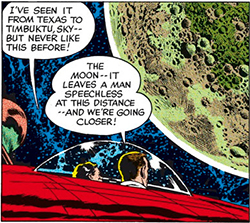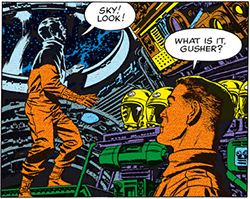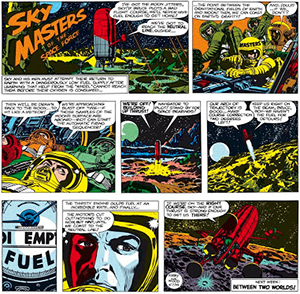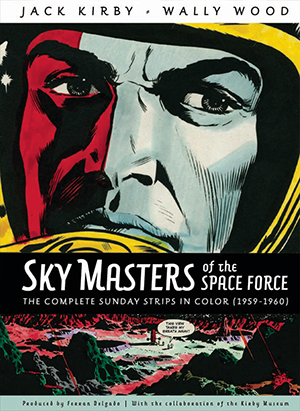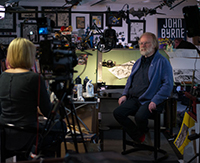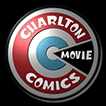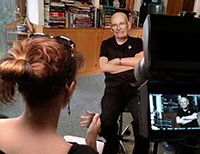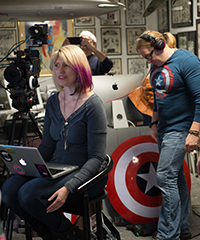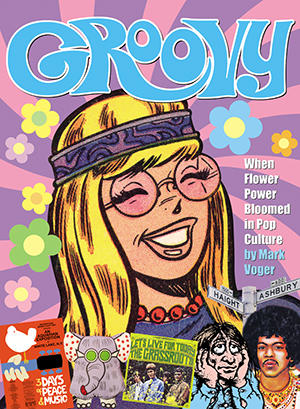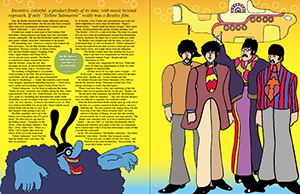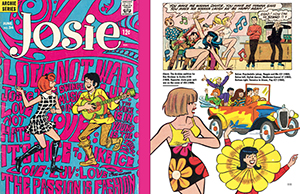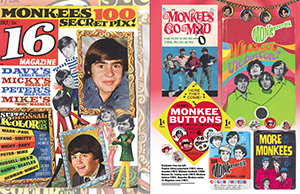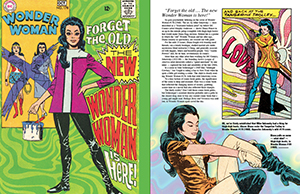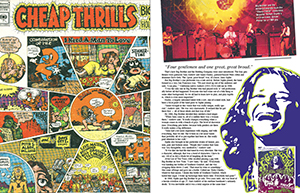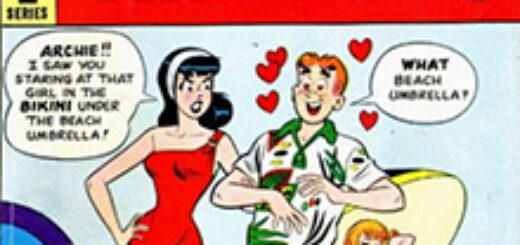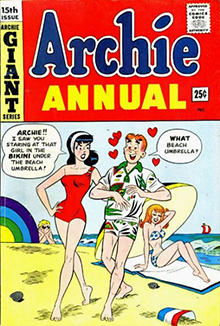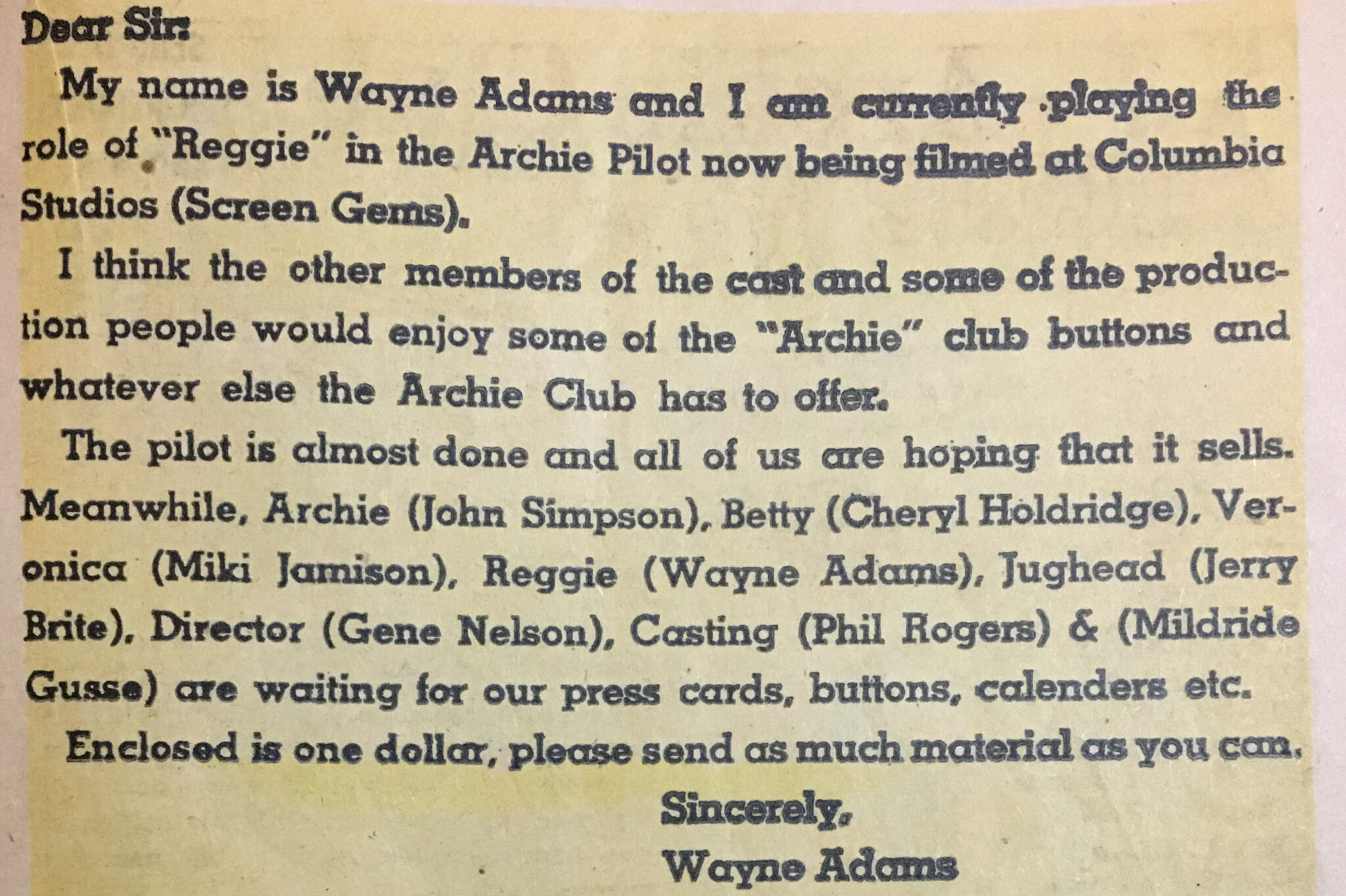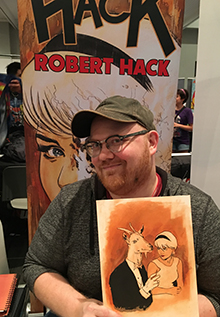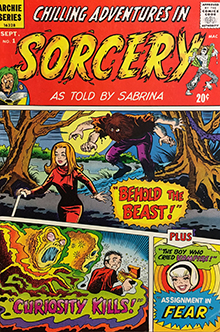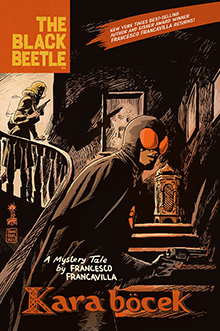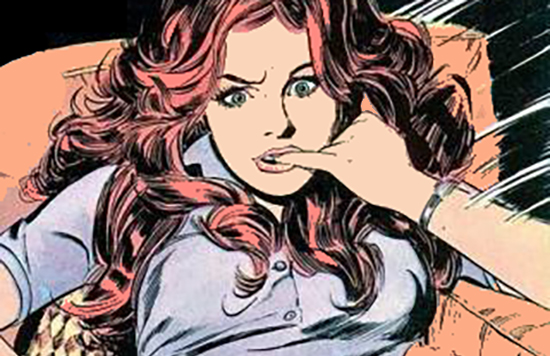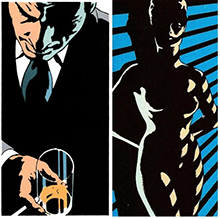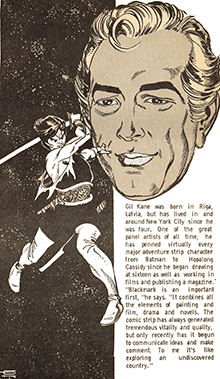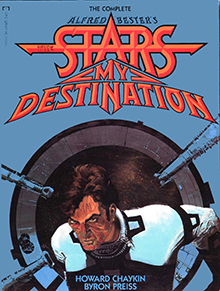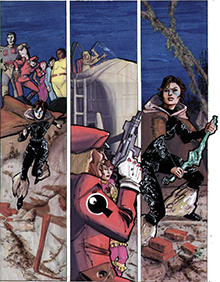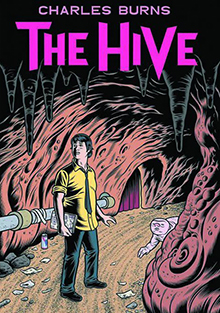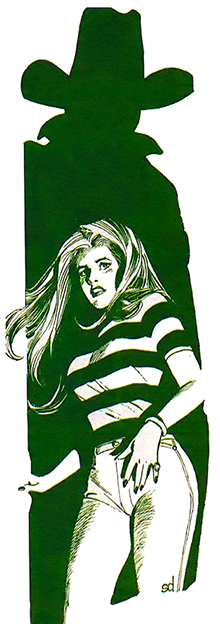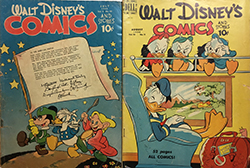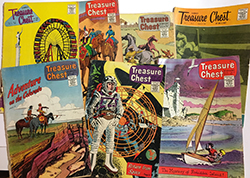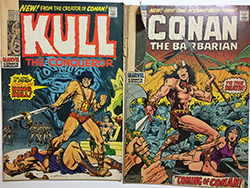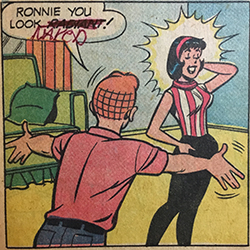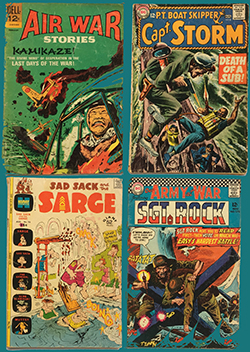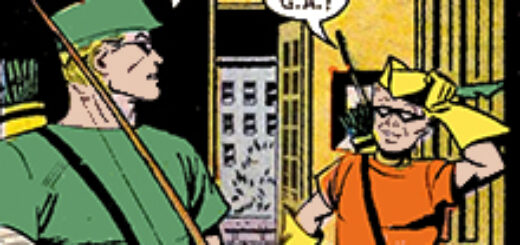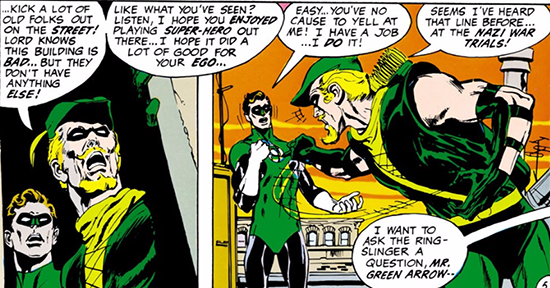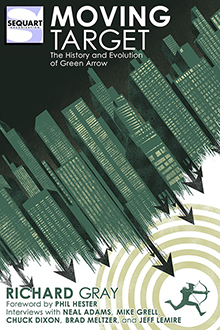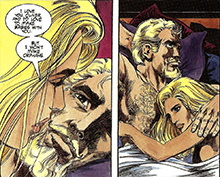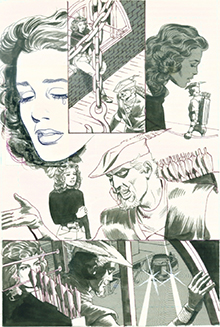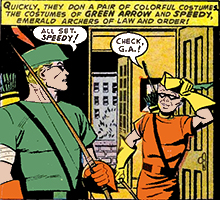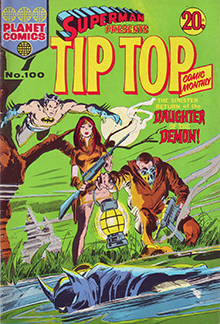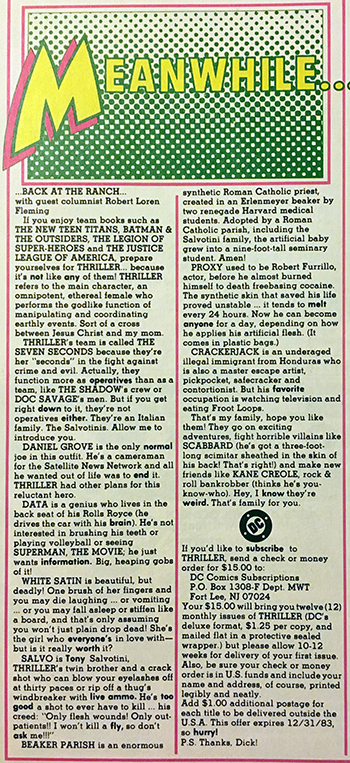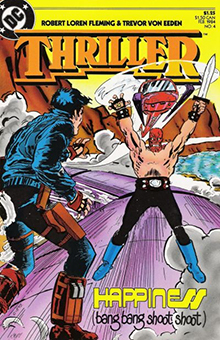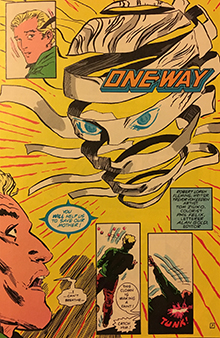Ed Catto: Sky Masters, Part 2
 When it comes to music, we all get it right away. We understand what duets are, and how the combination of two favorite performers can result in something new and special. In 2006, the album Duets teamed Tony Bennett with a myriad of music’s A-listers. It was an instant hit. Part of the fun was the surprising range of match-ups. While a song featuring Bennett collaborating with Barbara Streisand was expected, duets with musicians like k.d.lang or the Dixie Chicks were wonderful surprises.
When it comes to music, we all get it right away. We understand what duets are, and how the combination of two favorite performers can result in something new and special. In 2006, the album Duets teamed Tony Bennett with a myriad of music’s A-listers. It was an instant hit. Part of the fun was the surprising range of match-ups. While a song featuring Bennett collaborating with Barbara Streisand was expected, duets with musicians like k.d.lang or the Dixie Chicks were wonderful surprises.
Sometimes a collaboration exceeds the original. For example, I’d argue that the version of Gloria by John Lee Hooker and Van Morrison is much more fun than the original version Morrison recorded with his old band, Them. Likewise, Elvis Costello and Burt Bacharach, two geniuses from different generations, collaborated in the late 90s and produced wonderful songs enthralling fans of both artists.
Comic art collaborations are different. When enjoying traditional comic art, it’s harder for most folks to understand what the penciler and the inker each bring to the party. But both types of artists have a role to play and opportunities to seize. Sometimes fans will like a certain artist paired with a certain inker. Other times, the combination might not gel, resulting in an unsatisfying experience for readers. Some inkers support a penciller’s vision, other times they might dominate it.
Wallace (Wally) Wood was one the great very artists, but he often played the role of inker. I reached out to Walter Simonson (an incredible artist in his own right) to find out just what it was like to have Wally Wood ink your artwork. Walter kindly shared his thoughts with me:
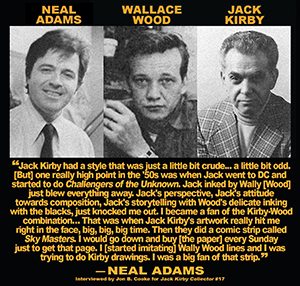 “Back in 1976, Denny O’Neil asked me if I would be willing to draw layouts for an ongoing DC comic, Hercules Unbound. Wallace Wood had been doing the finished inks over layouts. I jumped at the chance. I knew Woody personally just a little from the time I spent hanging out at Continuity Associates, Neal Adams and Dick Giordano’s studio in New York. But I knew Woody’s work extensively, from his EC stories to his work on the early MAD magazines, to Witzend, and his later work on Daredevil and other mainstream comic books. I was thrilled.
“Back in 1976, Denny O’Neil asked me if I would be willing to draw layouts for an ongoing DC comic, Hercules Unbound. Wallace Wood had been doing the finished inks over layouts. I jumped at the chance. I knew Woody personally just a little from the time I spent hanging out at Continuity Associates, Neal Adams and Dick Giordano’s studio in New York. But I knew Woody’s work extensively, from his EC stories to his work on the early MAD magazines, to Witzend, and his later work on Daredevil and other mainstream comic books. I was thrilled.
“As the layout artist, I expected that the finished work would look like Woody’s stuff. And by and large, it did. But it was such a learning experience. For layouts, I wasn’t spotting blacks in my drawings, and it was a revelation to see what Woody did with them. Beautiful to observe. My real regret was that Woody left the book after he had done only two issues over my layouts. But he told me before departing that he really liked what I had given him to work with. It was the structure he needed to create his finished work without difficulty. I was thrilled. Thanks, Woody. Nobody called it a bucket list back then, but that’s exactly what it was, a big check mark off the bucket list!”
The best collaborators actually collaborate. And that’s what happened when Jack Kirby worked with Wally Wood to produce the newspaper comic strip Sky Masters. Last week we talked about the new reprint edition from Amigo Comics. This week we’ll take another bite out of the apple. I’ve persuaded my friend, J. David Spurlock, an expert on Wallace Wood and a guy with a lot of great stories, to contribute a few more thoughts about this unique collaboration.
So join me for J. David Spurlock’s Sky Masters: The Jack Kirby-Wally Wood Masterpiece —the greatest teaming of America’s two most iconic mid-century comic book talents!
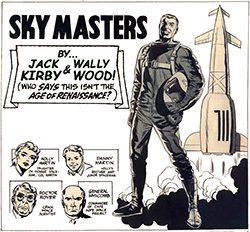 McCarthy-era political witch-hunts fed even vice-presidential hopeful Estes Kefauver’s investigations into juvenile delinquency. The fallout came very close to killing the American comic book industry in the second half of the 1950s. Comic books were demonized and workers in the industry humiliated. Most publishers went out of business. The few that stumbled on, slashed titles to the quick and experimented with new/alternative genres. As Carmine Infantino told me, even the industry’s top company, National/DC, were not only laying-off talent but also cutting pay rates for those who stayed. Joe Orlando confirmed he was so humiliated he started telling non-industry people that he “illustrated children’s books” in lieu of confessing he was a comic book artist. Stan Lee likewise confirmed that in that period, he skirted telling people he worked making comic books. Every artist aspired to doing a newspaper strip. Newspaper strip work — as opposed to the then-shamed comic books— was not only respectable, it was celebrated and could generate great income based on circulation.
McCarthy-era political witch-hunts fed even vice-presidential hopeful Estes Kefauver’s investigations into juvenile delinquency. The fallout came very close to killing the American comic book industry in the second half of the 1950s. Comic books were demonized and workers in the industry humiliated. Most publishers went out of business. The few that stumbled on, slashed titles to the quick and experimented with new/alternative genres. As Carmine Infantino told me, even the industry’s top company, National/DC, were not only laying-off talent but also cutting pay rates for those who stayed. Joe Orlando confirmed he was so humiliated he started telling non-industry people that he “illustrated children’s books” in lieu of confessing he was a comic book artist. Stan Lee likewise confirmed that in that period, he skirted telling people he worked making comic books. Every artist aspired to doing a newspaper strip. Newspaper strip work — as opposed to the then-shamed comic books— was not only respectable, it was celebrated and could generate great income based on circulation.
In 1958, inspired by Sputnik and the emerging US and Russian space programs, Harry Elmlark of the George Matthew Adams Service newspaper syndicate asked National/DC Comics writer-editor Jack Schiff to help him put together a team for a space program-related strip. Schiff was too committed at National/DC to take on writing a daily strip and reached out to Dave Wood about writing. Dave Wood and acclaimed 1940s Captain America co-creator Jack Kirby had been working under Schiff as editor on the Kirby-created DC-published comic book, Challengers of the Unknown. Dave Wood and Kirby had previously worked on another proposed space strip which had not been picked up. Both Kirby and Dave Wood confirmed they were interested in creating the proposed new strip.
 Kirby, Schiff and Dave Wood assumed Kirby’s associate, Marvin Stein, would be inking Kirby’s pencil work but, Stein had had enough of the cockamamie comics business and left for better, steadier work in advertising, as so many did during the mid-to-late ’50s comics implosion. With Stein out, Jack knew he needed a top quality, polished inker to help his work compete with such illustrative adventure strip artists like Alex Raymond, Hal Foster and Milton Caniff. Jack realized the absolutely best man for the job was Wallace Wood (no relation to Dave) who had quickly risen to be America’s foremost sci-fi comic book artist a few years earlier via his groundbreaking work at EC Comics on such titles as Weird Science and Weird Fantasy.
Kirby, Schiff and Dave Wood assumed Kirby’s associate, Marvin Stein, would be inking Kirby’s pencil work but, Stein had had enough of the cockamamie comics business and left for better, steadier work in advertising, as so many did during the mid-to-late ’50s comics implosion. With Stein out, Jack knew he needed a top quality, polished inker to help his work compete with such illustrative adventure strip artists like Alex Raymond, Hal Foster and Milton Caniff. Jack realized the absolutely best man for the job was Wallace Wood (no relation to Dave) who had quickly risen to be America’s foremost sci-fi comic book artist a few years earlier via his groundbreaking work at EC Comics on such titles as Weird Science and Weird Fantasy.
Wallace Wood had nothing to do with negotiations with Schiff and/or the syndicate. His relationship was solely with Jack Kirby. As my research for the Eisner-Award recognized Wood biography, Wally’s World revealed, it was Kirby who phoned Wood’s studio and the call was answered by Wood’s wife/assistant/colorist Tatjana: “Who’s calling?” “Jack Kirby” the response came. “Wallace, Jack Kirby is on the phone.” Kirby invited Woody to work on the still untitled newspaper strip. They followed up with Jack coming to Wood’s studio where they started brainstorming including on what to name the strip. Jack liked the name Sky as the lead character’s fist name but wasn’t sure what to use for a surname. Wood had been playing with the name Cannon since childhood. Jack and Wally considered Sky Cannon and Wood drew that option up as a rough logo design, along with other ideas. Jack Kirby and Wallace (a.k.a. “Wally” or “Woody”) Wood ultimately settled on Sky Masters with Wally drawing the final logo art.
Wally Wood at the time was not working in comic books. He had grown to be so successful, he was doing far better paying humor, men’s, and sci-fi magazine illustrations, as well as paperback and hardcover book covers, and advertising. It was because Wood considered Kirby a “genius” (Woody was likely the first big name pro to use the word “genius” to describe Jack) and that, like everyone else, he dreamt of a hit newspaper strip, that Wood agreed to collaborate with Jack.
As soon as Kirby told Schiff that Wally Wood had agreed to ink and letter the strip, Schiff got excited and inquired whether Wood might be willing to return to comic books as well, to likewise work with Jack on Challengers of the Unknown. Out of respect to Jack, Wood agreed. Kirby and Wood hit it off and work started on the Sky Masters, Challengers, and an underwater strip idea, Surf Hunter.
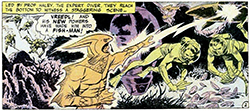 Newspaper strip deadlines never stop. There is no break. It is important to gear-up and have plenty done prior to the launch, as that is the only buffer a strip artist will ever have. Work on Challengers started during the Sky Masters gear-up period. Because of the release date of Wallace Wood’s first issue of Challengers, there has long been confusion about the timeline — which came first, Wood’s joining Challengers or Sky Masters? Through my Wally’s World research, I was finally able to clear it all up via my interviews with a few of the first-person witnesses to these matters, Tatjana Wood, who took the initial call from Kirby and was in the studio when Jack came over for meetings and with my dear friend, Al Williamson who occasionally helped out inking some backgrounds. The Kirby-Wood collaborative period started with Sky Masters. Their work together is ultimate Americana. Imagine John Wayne doing a film with Elvis or Marilyn Monroe doing a film with James Dean. Kirby and Wood are like that except in their case, it actually did happen for a bright, fleeting moment.
Newspaper strip deadlines never stop. There is no break. It is important to gear-up and have plenty done prior to the launch, as that is the only buffer a strip artist will ever have. Work on Challengers started during the Sky Masters gear-up period. Because of the release date of Wallace Wood’s first issue of Challengers, there has long been confusion about the timeline — which came first, Wood’s joining Challengers or Sky Masters? Through my Wally’s World research, I was finally able to clear it all up via my interviews with a few of the first-person witnesses to these matters, Tatjana Wood, who took the initial call from Kirby and was in the studio when Jack came over for meetings and with my dear friend, Al Williamson who occasionally helped out inking some backgrounds. The Kirby-Wood collaborative period started with Sky Masters. Their work together is ultimate Americana. Imagine John Wayne doing a film with Elvis or Marilyn Monroe doing a film with James Dean. Kirby and Wood are like that except in their case, it actually did happen for a bright, fleeting moment.
A short digression re: the Kirby-Wood signatures that appear on the art. For many years, general readers didn’t know Dave Wood was involved with the strip. It was understood that the Kirby-Wood signature was for Kirby and Wallace Wood who put as much work into that strip as he did anything else that he signed in his career. After many years, it started getting out that the writer’s name was also Wood and he had a brother/helper named Dick Wood. Jack Kirby said, for a while he thought everyone in the business was named Wood. Some would say the Wood in the signature is for the writer, Dave Wood — and that is reasonable if not traditional. I would like to propose that this case might not be so traditional: When the artist Wallace Wood — one of the most accomplished comics artists of all time — who signed the signature signed them, that he was not signing for the writer who was nowhere near as notable of a talent as the artist was but, happened to have the same name. Woody signed his own name to his own work. It has nothing to do with who made the original agreement to produce a space strip or when, in the pre-launch process Woody came on board. It had to do with one of the top talents of all time putting blood, sweat and tears into his labor of love and being proud of his work. How many National/DC strips listed Dave Wood’s signature? But, even when DC did not publish credits, if the great comics master Wallace Wood signed, no one at DC dared white it out (see first-person account from Jim Shooter). Unless we find a contract saying that Dave Wood’s name was required to be credited and lettered into every strip, we have no way of knowing what the signature would have been had Wallace Wood not helped launch it and signed it with his own hand.
Wallace only stayed for about half of the strip’s tenure. It was a huge loss when Woody left the strip. But he understandably did not want to get dragged into a growing legal dispute between Jack Schiff and Jack Kirby which he had nothing to do with. Plus, the strip was not picked up by enough papers to make big money. To minimize the public knowing Wallace had left.. to minimize change… and as the writer’s name was also Wood, they kept the signature going after Woody left. Likewise, Kirby himself attempted to ink in Wood’s style. When Kirby hired Dick Ayers to take over inking, he requested Ayers to likewise mimic Wood’s style. I got that fact directly from my dear friend Dick, who went on to say, he would have loved to have done work more like Wood’s but, it took too much time and there wasn’t enough money in comics (or Sky Masters) to work that way — because, Wood did far more than just ink.
To add confusion, in a late interview, Jack oddly minimized Woody’s well known and obvious contributions and indicated what they had wanted the public to think of the signature after Woody left—that it was for the writer. It must be understood that in the period that Jack gave that interview, Jack was so fed up with the fact that most of his career, he had been credited in second place to Simon and Lee, who Jack felt did less of the creative work than Jack did. At that time, Jack was on a mission to balance the scales and set the record straight that he/Jack had been the primary creative force — and unfortunately, when Sky Masters unexpectedly came up, Woody got caught in the crossfire. Again, unless we find a contract saying that Dave Wood’s name was to be credited and lettered into every strip, we have no way of knowing what the signature would have been had Wallace Wood not helped launch the strip and signed it.
 Sky Masters is the greatest teaming of America’s two most iconic mid-century comic book creators, Jack Kirby and Wally Wood. What makes it better, more important, than their other works (even Challengers) is that particularly on Sky, they worked as equals. It is not Wood inking Kirby, it is a different animal. Something new, something more unique than their other works… not Kirby, not Wood, but the totally unique hybrid that can only be called, Kirby-Wood! Jack once said, in Wally, on Sky Masters, “I was [only] looking for an inker but got a [true] collaborator.
Sky Masters is the greatest teaming of America’s two most iconic mid-century comic book creators, Jack Kirby and Wally Wood. What makes it better, more important, than their other works (even Challengers) is that particularly on Sky, they worked as equals. It is not Wood inking Kirby, it is a different animal. Something new, something more unique than their other works… not Kirby, not Wood, but the totally unique hybrid that can only be called, Kirby-Wood! Jack once said, in Wally, on Sky Masters, “I was [only] looking for an inker but got a [true] collaborator.
Jack Kirby and Dave Wood never created a masterpiece.
Jack Kirby and Wally Wood created a masterpiece!
One of the titles I have so aptly bestowed upon Woody is “The Great Collaborator.” Whomever he worked with made history: Kirby-Wood, Eisner-Wood, Ditko-Wood, Kurtzman-Wood, etc.
If Kirby had not brought in Wallace Wood, Sky Masters would have been just one more in Kirby’s long history of minor, attempted and/or short-lived newspaper strips and we would not be discussing it now and no one would be investing years of work to put together a glorious edition of it. Instead, it is one of Jack’s greatest artistic accomplishments — something he proudly hung for decades by his drawing board — despite the later business problems. It may well be the first work he was so proud of he fought to get the originals back on, after publication. It is the ultimate Kirby-Wood masterpiece specifically because, thanks to Kirby recognizing, inviting, and wisely granting Wally Wood the creative freedom to be so much more than a technician who traces with ink; it is a true, equal, artistic collaborative creation.
David Spurlock is a prolific, award-winning author-historian and serves as Director of The Wallace Wood Estate, and was a personal friend of Jack Kirby. For more info on Wood, visit the Wallace Wood Estate Facebook page. This piece is © J David Spurlock 2017, ARR and gratefully used with his permission.



